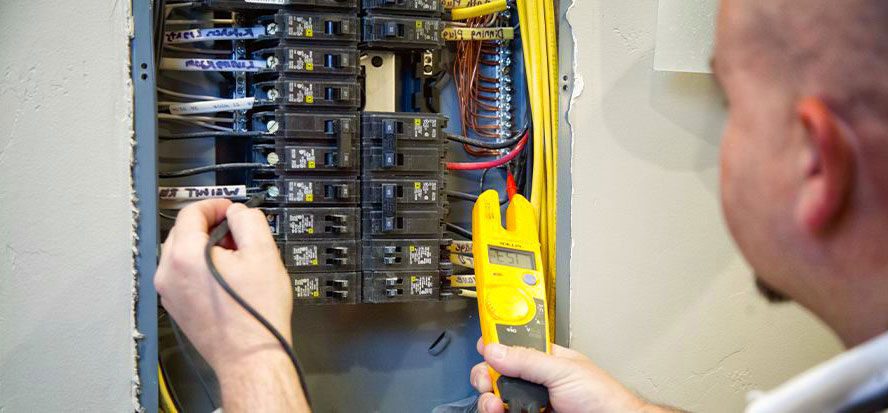Many of us these days are working from home either by choice or because of lockdown restrictions. It’s been an adjustment, to say the least. While telecommuting affords many advantages, there is one undeniable drawback: Our utility bills now reflect all that extra time at home.
Here’s how to curb your WFH costs and protect your expensive office equipment from power surges and other electrical hazards.
Save Energy in Your Home Office
Trade the Desktop in for a Laptop
If working from home is your new normal, consider replacing your old power-hungry desktop computer with an energy-efficient laptop. Some of the most efficient laptop models use 80% less electricity than computer towers.
When shopping for a laptop, pay attention to the watt-hour, or Wh, listed on the specifications. This measures the average wattage the device will use over the course of an hour. Most performance laptops will use about 90Wh, compared to a heavy-duty desktop’s 400Wh.
Adjust Your Computer’s Power Settings
Take a look at your computer’s power management settings to see where you can adjust for savings. For example, you can set your computer to throttle down to low-power mode after 5 minutes of inactivity. You can also program your computer to completely power down at night.
Opt for an EnergyStar Monitor
The monitor accounts for more than 50% of your computer’s energy consumption, and even when it’s not being used, it’s still drawing power. So it makes sense to opt for an EnergyStar-certified monitor. To earn the EnergyStar label, a monitor must include features such as automatic-shutdown after a certain period of inactivity.
Use a Smart Strip or Smart Plug
Smart strip: The difference between a smart strip and a conventional power strip is that it cuts the power when it detects your plugged-in devices (your laptop, phone, external monitor, and speakers) are in standby mode. This feature saves money because electronics continue to sip energy even when they’re sleeping.
Smart plug: A smart plug turns any standard wall outlet into a smart outlet, allowing you to control connected devices remotely or with your phone. For energy savings, smart plugs allow you to schedule when to boot up and power off your devices. Imagine entering your home office with your computer, lights, and coffeemaker already on! They can also identify devices that are leeching precious energy even when they’re not in use.
Safeguard Your Home Office Equipment
Put Your Computer on a Dedicated Circuit
Your washer, refrigerator, and dryer are all on dedicated circuits because they’re big machines that draw lots of power. But it might make sense to put your computer on a dedicated circuit, as well. While it doesn’t use nearly the same amount of energy as a major appliance, your computer, when combined with other office equipment, amounts to significant power consumption. A dedicated circuit will prevent wires from overheating and breakers from tripping, helping protect your equipment and data.
Install Whole-House Surge Protection
Without surge protection, you risk frying your expensive laptop and other pricey components. Whole-house surge protection monitors the power coming into your home and intercepts dangerous voltage spikes, protecting every plugged-in appliance and device from catastrophic damage.
Move Outlets For a More Functional Workspace
Don’t run extension cords across the room just because you want your desk by the window. Too many devices can overload the cord, posing a serious fire hazard. Also, do you really want to risk tripping over a cord, coffee in hand? Installing an additional outlet in a convenient location will better accommodate your home office.
For all of your electrical needs, turn to the St. George area electricians at HedgeHog Electric. Call (866) 605-2113 today!


